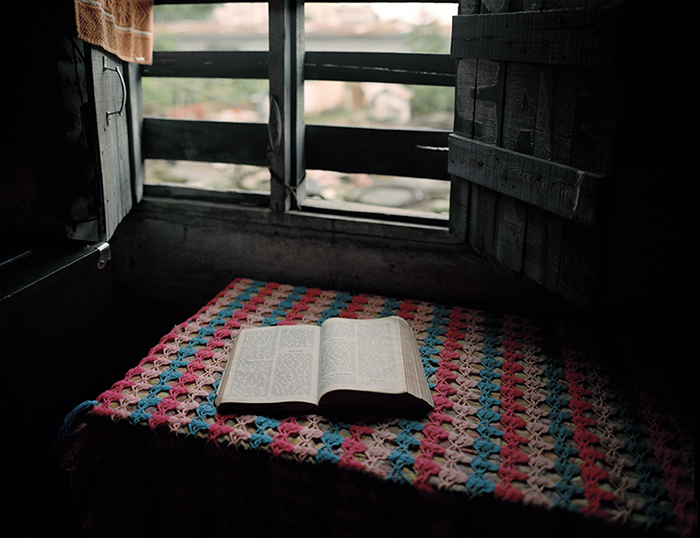Vancouver International Centre for Contemporary Asian Art
On Longing, Belonging, and the Changing City: A conversation with Surendra Lawoti
Since moving to North America almost twenty years ago, photographer Surendra Lawoti’s work has focused on the dynamics of such social issues as class, race, religion, in particular as they relate to immigration, marginalized communities and transnational experiences. Born in Nepal, he now lives and creates in Toronto. He received his BA in Photography from Columbia College Chicago (1999) and MFA in Photography from Massachusetts College of Art and Design (2005) in Boston. Lawoti has exhibited his photography nationally and internationally, and his work is included in Bank of America Collection (formerly the LaSalle Bank Collection), Citibank Corporate Art Program, Ruttenberg Collection, and other private collections.
His most recent major body of work, a series titled ‘Landscape in Transformation: The Kathmandu Project’ investigates the changing social and political climate in Kathmandu, Nepal, and focuses on the people and communities of this changing city in his home country. One work from the series, Sabita Poudel’s Bible, Banshighat, one of fourteen squatter settlements along the banks of Bagmati River, will be available for auction at the upcoming 14th Annual Fundraising Dinner and Auction for Centre A, the Vancouver International Centre for Contemporary Asian Art in Vancouver on April 27, 2013. Founded in 1999, Centre A strives to provide a platform for contemporary Asian art that engages, educates, and stimulates a reflective experience that provokes critical thought. Over the past 14 years, they have showcased over 300 artists from across Canada and around the world, and have produced over 80 original projects and exhibitions.
Where did the idea for this piece, together with the larger desire to travel to and photograph Kathmandu, stem from?
I was born and raised in Nepal. As a young adult, I came to North America to pursue University studies. After finishing up my studies, I decided to stick around, as I liked it here. But after eighteen years in North America, Nepal is still home, which I find it quite incredibly fascinating. In many ways, my current work is about this transnationalistic experience: my life between North America and Nepal and the occupation of multiple places simultaneously. As Nepal is important to me, I have always wanted to do a project based in Nepal. And now Nepal is at an interesting juncture, socially, politically and culturally. So I decided to focus on Kathmandu for my new work.
This specific body of work is influenced by Robert Frank’s The Americans. It is a seminal work in the history of photography. As Frank did, I want to use the social and political vernacular of Kathmandu to weave together pictures of quite disparate and complicated, but intertwined ideas. I came up with the idea of using Bagmati River, which runs through the Kathmandu Valley to thread together the diverse set of images of landscapes, portraits and interiors. I was also interested in fourteen settlements along the banks of Bagmati River for a few reasons. First the settlements spoke to the idea of displacement of Nepali during the recent Maoist insurgency. Second, the settlements juxtaposed with newly constructed and mushrooming housing developments of Kathmandu would address the socioeconomic disparity.
What is the story about this work (Sabita Poudel’s Bible) in particular? How does this series build on some of the ongoing themes within your practice?
I visited a few of the settlements and connected with a few of the families. Sabita Poudel is a young woman who lives in Banshighat with her parents and her younger brother. Her family runs a small mom-and-pop store in the settlement. Sabita’s family is Hindu, but she converted to Christianity a few years ago when she fell seriously ill.
The image of Sabita Poudel’s Bible is quite introspective. And all my works are quite introspective in nature. The introspection is about longing and belonging to a space and a place. My earlier work was about the immigration experience and now the work is about transnational experience.
I start off the series with two images of B?ghdw?r in the Shivapuri hill in Northern edge of Kathmandu Valley. The headwater of Bagmati River is located in B?ghdw?r. Etymologically; Shivapuri is made up of two words ‘Shiva’ and ‘puri’. Shiva, as in the one of the five powerful Hindu deities. Puri in Sanskrit means abode. So Shivapuri means the abode of Lord Shiva and his wife Parbati. According to the legend, once Shiva laughed feverishly and some of his saliva from his open mouth touched the ground and the Bagmati River sprouted out from the earth. So this series starts with a Hindu mystic, referring to Nepal that was constitutionally declared a Hindu state until 2006. In 2006, Nepal was declared secular giving much yearned for freedom to many religious minorities. So with Sabita Poduels’ Bible juxtaposed with the two images of B?ghdw?r, there is a subtle juxtaposition of the old Nepal and the New Nepal. To me this image is about Sabita Poudel and the New Nepal that so many Nepalis are aspiring for.
There is a quiet, cool ambiance in this work and other photographs in this series. How do you approach your photography practice, what principles do you explore as you compose and create images?
I use a 4×5 view camera and work with colour negatives. So the camera is quite bulky, on a tripod and I am shooting sheet film, one shot at a time. So it is not like I am snapping away with a digital point and shoot. Hence the whole process of making a photograph is quite considered, collaborative and time consuming. I am very much interested in social issues, politics, documentary and beauty. I want my work to be embedded in the social and political issues of Nepal. There are already too many pretty pictures of mountains and temples of Nepal in the West, and I don’t need to add anything to it. Aesthetics is also important to me. I want the aesthetics to play an important part in the content and meaning of the work. I want the aesthetics to feel personal and not didactic.
What current projects and ideas are you working with today?
I made two visits to Kathmandu in 2012. Right now I am looking at the work, editing and printing them. It’s going to be a long-term body of work. So now, I have to figure out how to fund my next trip to Nepal in July and August of 2013. Besides that, I am working on a project commissioned by Toronto Regional Conservation Authority and Harbourfront Centre. It is called Nine Rivers City and looks at the nine river watersheds of Toronto including Rouge, Don and Humber. I am photographing people’s deep relationship with the Rouge River. The work will be exhibited with five other photographers’ work as an outdoor installation at the Harbourfront Centre in Toronto in June, and it will be up for a year.
Click HERE for more information on Surendra Lawoti







